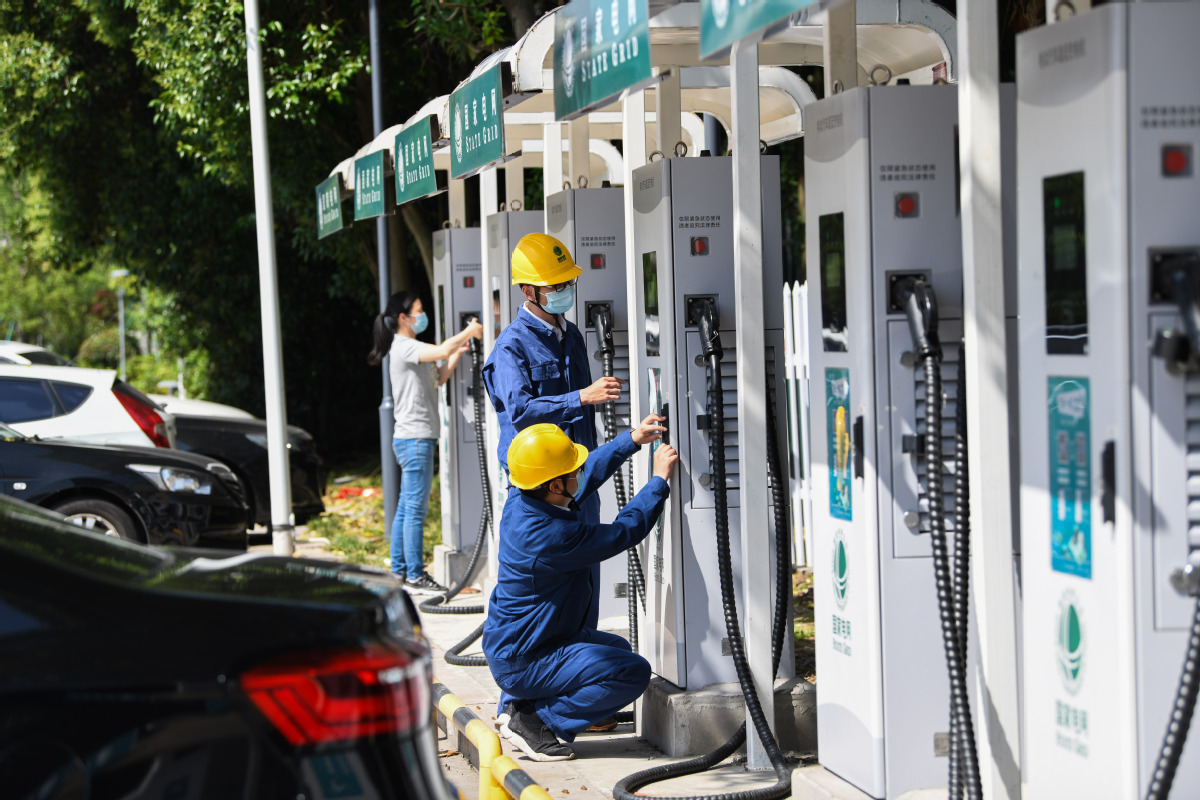Fasten e-car seat belt, tap app to rent battery

By the time Victoria Xiang, a fellow reporter, and I finished an interview in eastern Beijing, it was already 10 pm. I was in a hurry to return home after a long and tiring day of work. Xiang had another issue to deal with: she needed to charge her new Tesla electric car.
"There is no quick-charger in my community," Xiang sighed, and threw up her hands in exasperation. "We dare not drive our car long-distance. What if there isn't a charging pile on the way?"
More questions poured out of her mouth. "Why can't charging facilities be everywhere? What about private charging swap?"
Xiang is not the only one complaining. Many people who bought an NEV, or new energy vehicle, have experienced similar frustration.
Over the last five years, China has made great efforts to increase the number of charging facilities for e-vehicles. But, demand outstrips supply.
At September-end, there were 42,000 charging stations and 1.42 million charging piles across China. Crucially, the vehicle-to-pile ratio is only 3.1:1.
However, for perspective, one should turn to Yang Dongsheng, head of product planning and new auto technologies research institute of Chinese carmaker BYD. "It's a misconception among a large number of consumers that charging piles should be everywhere. There is no need of that because many cars now have a cruising range of 500 kilometers to 600 kilometers, and consumers can use it for a week or even longer with a single charge."
He noted that the fast-charging mode will lead to 80-percent charge in half-hour. With improvement in technologies, this time will be even faster, he said.
"The ideal situation is that there will be supporting services in the surrounding areas of charging facilities, such as shopping malls, so that people can go shopping, and at the same time, finish charging."
As the number of e-car owners rises, the need for building more private charging facilities is understandable, said Wang Binggang, director of the technical expert committee of the China Industry Technology Innovation Strategic Alliance For Electric Vehicles.
But with the continuous increase in the number of e-vehicles, the charging behavior has an increasing impact on the grid capacity, he said.
"If a large number of private users adopt the fast-charging mode, this will undoubtedly bring a huge burden to the grid. Infrastructure construction needs to start from the actual needs of consumers, from a perspective that is conducive to the healthy development of electric vehicles. And we also need to consider the load capacity of the grid," he said.
Xin Guobin, vice-minister of the Ministry of Industry and Information Technology, noted that many companies are also exploring how e-vehicle users could rent fully-charged batteries instead of recharging a battery.
The rent-a-battery model will also give birth to some new service models and service formats, and some specialized battery banks and battery operating companies, Xin said.
"Under this model, renting an NEV battery is very likely to be convenient and fast, just like ordering food online," he said.

